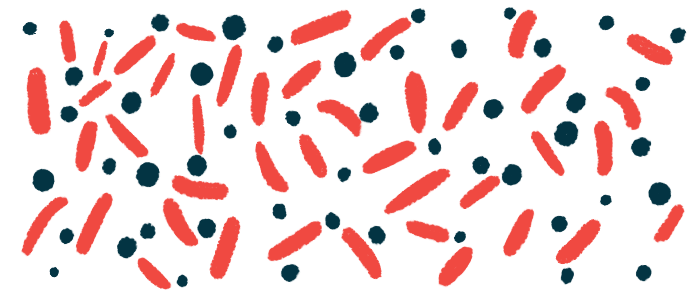S. aureus Infections in the Nose Not Tied to Ear, Nose, and Throat Disease
Antibiotics to clear the infection didn't reduce AAV disease activity

Nasal Staphylococcus aureus infections don’t appear to influence disease activity in ANCA-associated vasculitis (AAV) patients with ear, nose, and throat involvement, a study suggests.
Treatment with antibiotics to clear S. aureus infections didn’t reduce disease activity either.
“Our study shows no difference in systemic and local disease activity between the patients colonized with S. aureus and S. aureus negative patients. Neither did we observe an effect of antibiotics on local and systemic disease activity,” the researchers wrote “It is therefore possible that S. aureus plays a smaller role in AAV than previously thought.”
The study, “The effect of nasal Staphylococcus aureus colonization and antibiotic treatment on disease activity in ANCA-associated vasculitis: a retrospective cohort study in the Netherlands,” was published in Rheumatology International.
AAV comprises a group of autoimmune diseases marked by inflammation and damage to small and medium-sized blood vessels. Three main subtypes are microscopic polyangiitis (MPA), granulomatosis with polyangiitis (GPA) and eosinophilic granulomatosis with polyangiitis (EGPA), and all three share similar clinical features, but ear, nose, and throat (ENT) involvement are more commonly seen with GPA.
People with GPA have higher rates of nasal S. aureus infections than healthy people, with past studies associating these infections with AAV relapses.
While some studies reported benefits from using antibiotics in AAV, it’s still unclear if nasal S. aureus infections and antibiotic treatments to clear them impact AAV disease activity.
Researchers in the Netherlands took nasal swabs from 100 AAV patients with ENT involvement to test for S. aureus. More than half (60%) were female and 75% were Caucasian. They were followed for a median of eight years.
The researchers reviewed patients’ steroid and antibiotic treatment history. Antibiotic treatment was either systemic (for the whole body) or local (for the nose only). Relapse rate, disease activity measured by the Birmingham vasculitis activity score (BVAS,) and ENT disease, including saddle nose deformity and subglottic stenosis, were also evaluated. Subglottic stenosis refers to a narrowing of the airway below the vocal cords, while saddle nose deformity is a collapsed or bent nose bridge.
A total of 44 patients tested positive for S. aureus, with 28 (63.6%) receiving antibiotic treatment to clear it. Of the 56 patients testing negative, 12 (21.4%) were also taking antibiotics. Nasal steroids were used by 51 patients. AAV relapse rate was 0.1 per patient per year, with one patient developing subglottic stenosis and 13 developing saddle nose deformity during follow-up.
Disease activity in the nose and in the rest of the body, relapse risk, relapse rate, and BVAS scores were similar in those with and without S. aureus infections. Moreover, disease activity in the nose and in the rest of the body was similar among patients taking antibiotics to clear S. aureus and in those not taking them. Saddle nose deformity affected both patient groups similarly too.
Considering these results, researchers suggested nasal S. aureus infections in patients with ENT involvement are opportunistic, occurring because of active ENT disease, rather than being the cause. They also noted “the absence of difference between the S. aureus positive and negative group in disease activity … could indicate that S. aureus may play only a minor [disease-causing] role.”
The study’s limitations included the small number of patients tested for S. aureus infections and the small group receiving antibiotic treatment, the researchers noted, adding antibiotics’ role in “AAV patients colonized with S. aureus on AAV disease activity needs to be prospectively evaluated in a larger cohort.”







